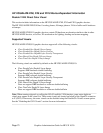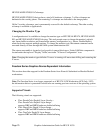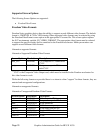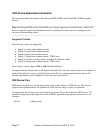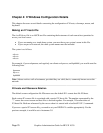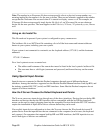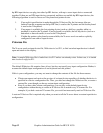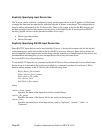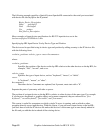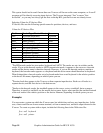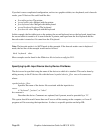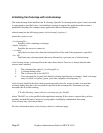hp-HIL input devices can plug into other hp-HIL devices, with up to seven input devices connected
together. If there are no DIN input devices connected, and there are multile hp-HIL input devices, the
following algorithm is used to choose an X keyboard and pointer device.
1. If no explicit specification is made through the X*devices file, the last mouse (the one
farthest from the computer on the hp-HIL line) is used as the X pointer and the last keyboard
is used as the X keyboard.
2. If no mouse is available, the last pointing device (such as a dial box, graphics tablet, or
trackball) is used as the X pointer. If no keyboard is available, the last key device (such as a
buttonbox or barcode reader) is used as the X keyboard.
3. If either the pointer or keyboard are unavailable, the X server won't run unless explicitly
configured to run with no input devices.
X*devices File
The X server reads an input device file, X0devices in /etc/X11, to find out what input devices it should
open and attach to the display.
____________________________________________________________________________________
Note: A sample X0devices file is loaded into /etc/X11 unless one already exists. In that case, it is loaded
into /usr/newconfig/etc/X11.
____________________________________________________________________________________
The default X0devices file contains lines of text, but does not specify any input configuration. Rather, it
assumes the default input configuration of one keyboard and one pointer.
If this is your configuration, you may not want to change the contents of the file for three reasons:
• Clients can request and receive the services of an input device regardless of whether the device is
specified in a device configuration file. Thus, you need not change the X0devices file, or create a
custom file, even though you have a custom input configuration.
• Even if you have other screen configurations, you can rely on the default input device
configuration without having to create an X*devices file to match every X*screens file. For
example, if you had a custom X*screens file, you would not necessarily need an X*devices file.
A custom X*devices file is required only when you want to tell the X server about a custom input device
configuration.
Graphics Administration Guide for HP-UX 10.20
Page 81



